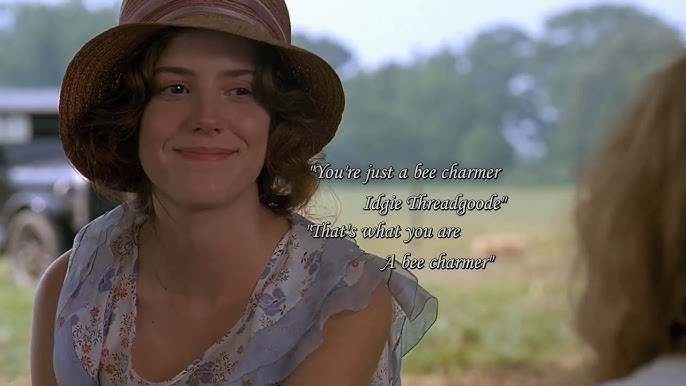
In the gentle yet powerful rhythm of Fried Green Tomatoes, Ruth Jamison often appears as the quieter half of the central duo. But beneath her composed exterior lies one of the most compelling emotional arcs in the film — a transformation from passive acceptance to active choice, from enduring pain to claiming life.
Ruth’s journey isn’t marked by sudden rebellion, but by a steady reclaiming of herself — shaped by love, pain, and ultimately, courage.
A Woman of Her Time — and Its Constraints
When we first meet Ruth, she’s everything a Southern woman in the 1920s was expected to be: graceful, devout, modest. She’s engaged to Buddy Threadgoode, and after his tragic death, she clings to structure — marrying Frank Bennett, a man who quickly reveals himself to be violent and cruel.
Ruth’s early choices aren’t rooted in desire, but in obligation and survival. The cultural expectations of wifehood, religion, and womanhood all weigh heavily on her. She doesn’t rebel when Frank mistreats her — not because she lacks awareness, but because she believes endurance is her duty.
Her body language, her silences, her forced smiles — all reflect a woman who has internalized submission as virtue.
Grief as a Catalyst
Ruth’s personal awakening begins in grief. The loss of Buddy and later, the suffocating realization of what her marriage has become, chips away at her faith in the world she thought was righteous.
Her pregnancy becomes a turning point. She begins to consider not just her own suffering, but the future of her unborn child. Frank’s violence isn’t just her cross to bear anymore — it becomes an active threat to innocence. This is the moment Ruth begins to shift from martyrdom to agency.
The Power of Idgie

It’s no coincidence that Ruth’s transformation is closely tied to her reunion with Idgie Threadgoode. In Idgie, Ruth sees something radical: a woman who lives outside of fear, outside of society’s narrow roles for women. Idgie doesn’t apologize for her freedom — she embodies it.
While Idgie may be the “wild one,” it is Ruth who makes the boldest choice: to write that letter, to ask for help, and ultimately, to leave. Escaping Frank isn’t just a physical act — it’s a spiritual rejection of the entire system that told her to stay quiet, obedient, and small.
In asking Idgie to come for her, Ruth is not only choosing safety. She’s choosing love, self-respect, and possibility.
Building a New Life on Her Terms
Once settled in Whistle Stop, Ruth becomes a partner in every sense of the word. She co-founds the Whistle Stop Café, helps raise Stump, and lives in a home free of domination. Her strength shines in quiet leadership: managing the kitchen, guiding the Sunday school, and standing beside Idgie during moments of tension.
Ruth isn’t just surviving anymore — she’s thriving, contributing, and creating. Her emotional tone changes: she smiles more freely, speaks more directly, and moves with self-possession.
Her love for Idgie — while never made explicit in dialogue — is deeply felt in their shared space, mutual care, and emotional transparency. Ruth no longer hides.
Facing Illness and Mortality with Grace
In the final stage of her journey, Ruth faces terminal illness. But even in this, she’s no longer the passive woman we first met. She chooses how to spend her remaining time, and with whom. Her gratitude, even in suffering, is genuine — not a religious mask, but the product of finally having lived a life she chose.
When Ruth tells Idgie, “You’re the best friend I ever had,” it’s a layered statement — part truth, part code for something even deeper. It’s love, gratitude, and a farewell, spoken with clarity and peace.
Legacy of Quiet Defiance
Ruth may never shout or fight, but she redefines strength. Her transformation proves that even within constraint, women can reclaim their agency. Her story is not about rejecting faith or femininity, but reclaiming both on her own terms.
She begins as a woman shaped by the world — and ends as a woman who reshapes it, at least in her corner of Alabama.
